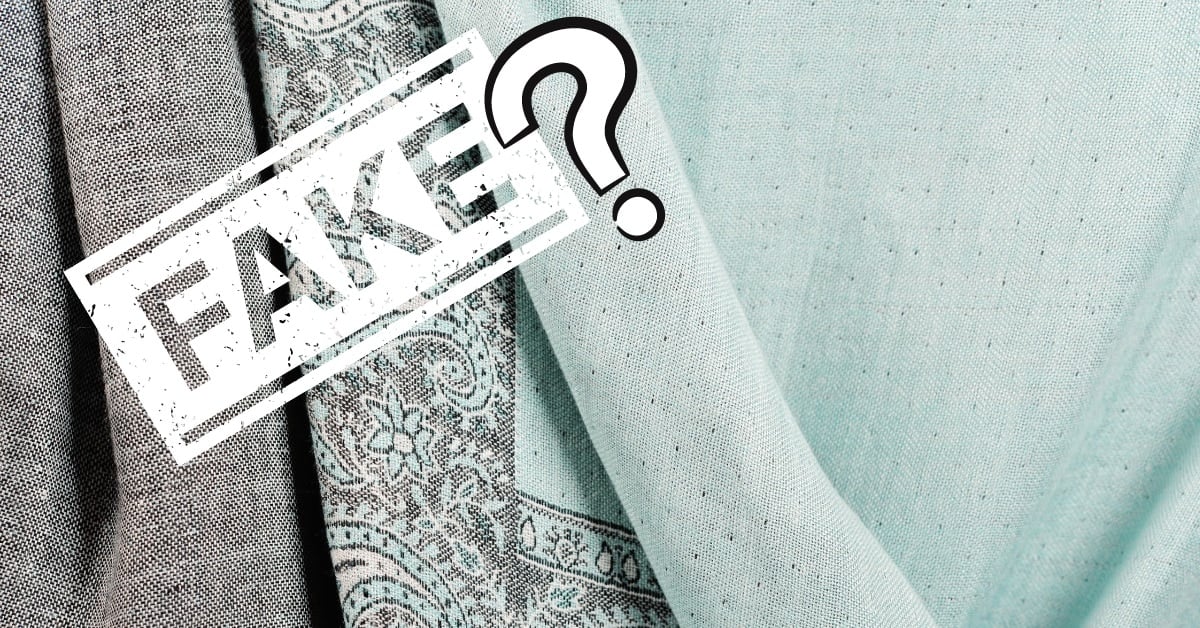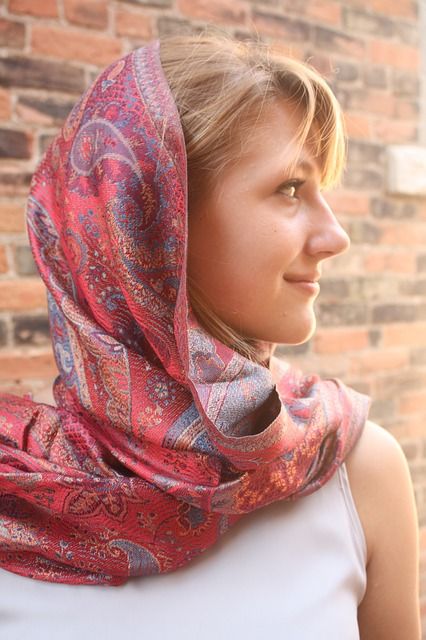
How to know you have the best hand spun hand-woven, original Pashmina shawl ?
A Pashmina shawl is not just any shawl to those who love it- it is the epitome of luxury, a status symbol. It is a coveted shawl, but a very expensive one – a shawl many have on their to-buy list. But you may be duped into buying acrylic or rayon or blended wool if you are not careful. But due diligence can make your purchase, the one you keep, cherish and use for years to come.
Just touch it and feel it against your hands. The best ones are as lightweight as a feather and the softest. In fact, a pure pashmina shawl can weigh as low as 200 gms.
The hand-woven pashmina shawls are lighter than the machine-woven ones. Costlier as well, of course. In fact, price is one way of knowing that you have the original pashmina shawl. If someone offers a pashmina shawl at a much lower rate than the market rate ( about 200 US dollars at present; the best ones are prized at upwards of 350 US dollars), it may well be of lesser quality.
If you are looking for a hand-spun, hand-woven original pashmina, do not go for a lesser-priced one. A good quality machine woven pashmina sells for anything above 100 US dollars.
You should always buy from a reputed manufacturer. You can check out for GI mark (Geographical Indication) on the shawls which is given by a certified Pashmina testing and quality certification center, which ensures that you have the best and finest pashmina wool. This testing is said to be a guarantee for buyers that their purchase is authentic and genuinely of its traditional origin.
Look at the label carefully. See how cashmere is pronounced in your shawl; if it is something odd like Cashmore, or cashmair, then your suspicion is right. You have a fake. Only genuine Cashmere products are allowed to be marked cashmere. If it says 100% pashmina and not 100% cashmere it is probably a fake. Anyone can write pashmina, but not anyone can label cashmere.
Then there is the test that gives you the original – The shawl has to pass through a thumb ring (Not tested it myself). If it eases easily through the ring you can be sure that you have the best in hand and can pay the premium prize for it
There is a reason why pashmina fabric is one of the most desired fabrics in the world.
What are Pashmina shawls made of?
Pashmina fabric is made of very soft, very warm, and very fine wool. And it is not just pashmina shawls that are in demand – the shawls come in other avatars like pashmina wraps, pashmina scarfs, pashmina stoles
Pashmina shawls are made from very fine wool from the underbelly of a special breed of cashmere goats found in the Himalayan regions. Imagine this fur keeping the goat warm in the sub-zero temperature high up in the Himalayas and that is how the shawl will keep you – but much more stylishly.
‘Pashm’, the Persian word, means wool.

Cashmere and pashmina
Most of the outside world think of pashmina and cashmere synonymously. But that is not true.
The wool for pashmina shawls comes from a distinct breed of the cashmere goat.
How is Pashmina shawls made?
The wool is collected and then sorted according to the quality. They are then cleaned, spun, woven and dyed into the precious pashmina shawls. A special spinning wheel is used to spun the fibers. The fibers are hand woven by skilled artisans and requires great expertise.
It is supposed to take more than 15 days for an artisan to make the final product which is why this hand-woven product is so expensive. Most intricate of them even take several months to make.
Today pashmina shawls are available in different colors and patterns. Plain pashminas are in high demand, but the younger generation mostly prefers printed pashminas – they are beautifully patterned with modern designs. Embroidered pashminas are a delight to see but will cost you a bomb.
Beautiful motifs from Kashmiri embroidery are used on these fabrics. There are dip-dyed pashminas and specially designed pashminas called the Jamawar & palladhar, Kani Pashminas, which have absolutely gorgeous Persian motifs and beautiful borders.
Machine made, handmade pashmina shawls, blends – should you buy?
You can get machine-spun pashmina shawls which are less costly than the traditionally woven ones. Still, fashion connoisseurs will easily recognize subtle differences between the hand-woven and machine-woven ones. You should not be duped into buying fake ones, especially if you are paying through your nose.
Aside from Pure pashminas, you also get shawls in wool pashminas and silk pashminas. These are blends of pashmina, wool, and silk, making it long-lasting and more affordable.
Further reading : http://gaatha.com/pashmina-weaving-kashmir/
Related posts: Fabric types chart ; Names of wools

I read all of your information about 100% pashmina vs. 100% cashmere pashmina. Mine reads 100% pashmina. So With that information I am unclear as to how to wash it. I am about to put it in a laundry bag. Woolite. Lukewarm water. Delicate cycle. Lay flat to dry. No mention of dry clean anywhere. I await your reply
Hi Marie
Though I have written to never wash pashmina in washing machine, I think there are many who use it to wash their pashmina – in the delicate cycle. But I would really be afraid of the spin cycle. If you wring it also the fibers may get damaged.
My beautiful Jaipur scarf, given to me as a present, comes off on everything I wear. From the first time I put it on, sitting on my bed, the sheets became covered in wool particles. Trying to get these particles off means they won’t even come off in the wash, neither do they hoover easily. This is a genuine Jaipur scarf. Its card reads: M.M B-85792554 ITEM NO: -7039 MADE IN P.R.C. Should I have rinsed it first before wearing it?
Virginia Mayo ginniemayo@hotmail.com
Hi Virginia
This is shedding and it is normal with wool type scarvesv- it is the short fibers detaching from the fabric. I have read that if you keep the fabric in a ziplock cover and keep in the freezer for sometime before wearing it the shedding will be less. Viscose rayon etc are silk alternatives and they also shed a lot. Your option is to just brush it off. Hand washing also will help to remove the loose fibers.
Sorry, but the concept that real pashmina passes through a thumb ring while others do not is a myth. This might have been true at one time, but modern materials and weaving procedures easily can produce such effects in non cashmere products. Many fakes can. Do this.
Thanks for the wonderful article on pashmina shawls… I really loved to know the interesting facts and prices of it. keep it up and do introduce more new articles in future.